Broodje Kroket, or my life as a fake Dutchman
When I was a kid, my stepfather Tim was from Pella, Iowa, a small town of (at the time) about eight thousand people southeast of Des Moines that didn’t so much cling to its Dutch heritage as it did incapacitate, mummify, stuff, preserve, mount, and laminate that heritage. Tulips. Wooden shoes. Traditional Dutch clothing. Windmills. More windmills.

These photos shamelessly stolen from flickr user ahhyeah’s set Tulip Festival Pella Iowa – May 2005
We didn’t live there, but my step-grandparents and a lot of Tim’s other family and friends did, so we ended up spending quite a bit of time there. We even got to participate a few times in their annual Tulip Time Festival’s daily parades, in which colorfully dressed children, brilliant tulip-themed floats, cheesemongers flinging small hunks of cheese into the crowd, folk dancers, marching bands, and various other characters wearing wooden shoes parade around the town square, dodging horse crap. The parades kicked off with a whole bunch of people scrubbing the streets but they should have been cleaning up afterwards instead. Maybe they did that too, it was a long time ago.
Luckily for you all, the photos of me in traditional Dutch attire have been lost to time but here’s one of my sister Bridget and our cousin Megan.
Just to show that I’m a good sport though, here’s a photo of me and my brother Eric wearing tan tuxedos to Tim & our mom’s wedding in Pella.

This is not traditional Dutch attire; however, the wedding was at a Dutch Reformed church so close enough I guess?
So basically, until this month, Dutch cuisine meant 2 things to me: Pella bologna and Dutch letters
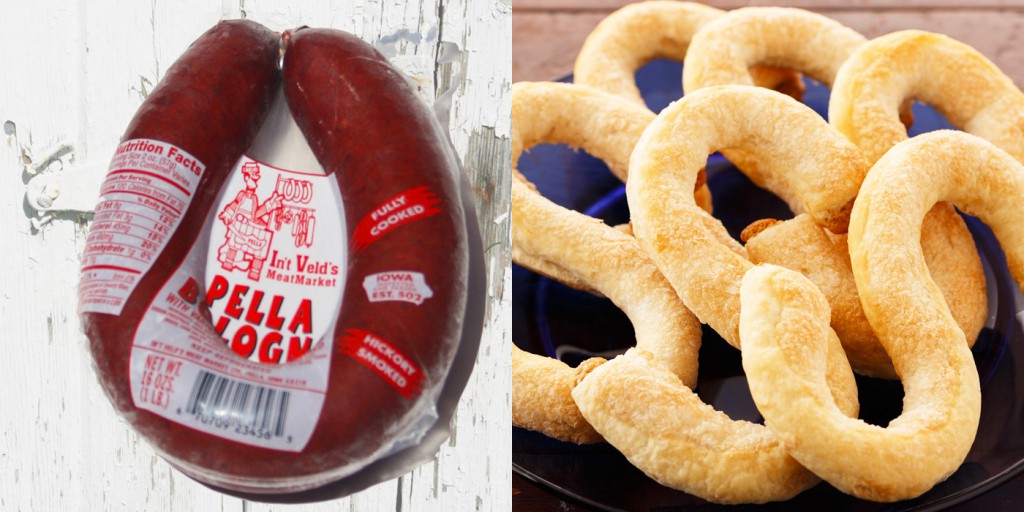
int’Veld’s Pella Bologna & Jaarsma Bakery‘s Dutch letters
That’s not entirely true though. Those are the things I remember the most fondly, and that I wish I had more regular access to, but the more I think back to those times, the more I realize that there are some other Dutch dishes I remember from my childhood in Pella. Spiced beef, of which my mom recently reminded me–a beef roast, seasoned with allspice or cloves, wet-roasted or braised until shreddable and served in buns. Dutch Mess, which as I recall was basically a perfectly decent German-style potato salad that for some reason gets boiled eggs and wilted lettuce added to it. Tater Tot Casserole, which probably isn’t Dutch but which I blame on Pella anyway, since we never had it before Nana introduced it to my mom’s repertoire. (Tim’s mom insisted that she and Tim’s dad were to be called Nana and Papa, which never really came naturally to me but what can you do?) Please do not eat this food; it is not Tribunal-recommended. Full disclosure though, as a kid I loved this stuff.
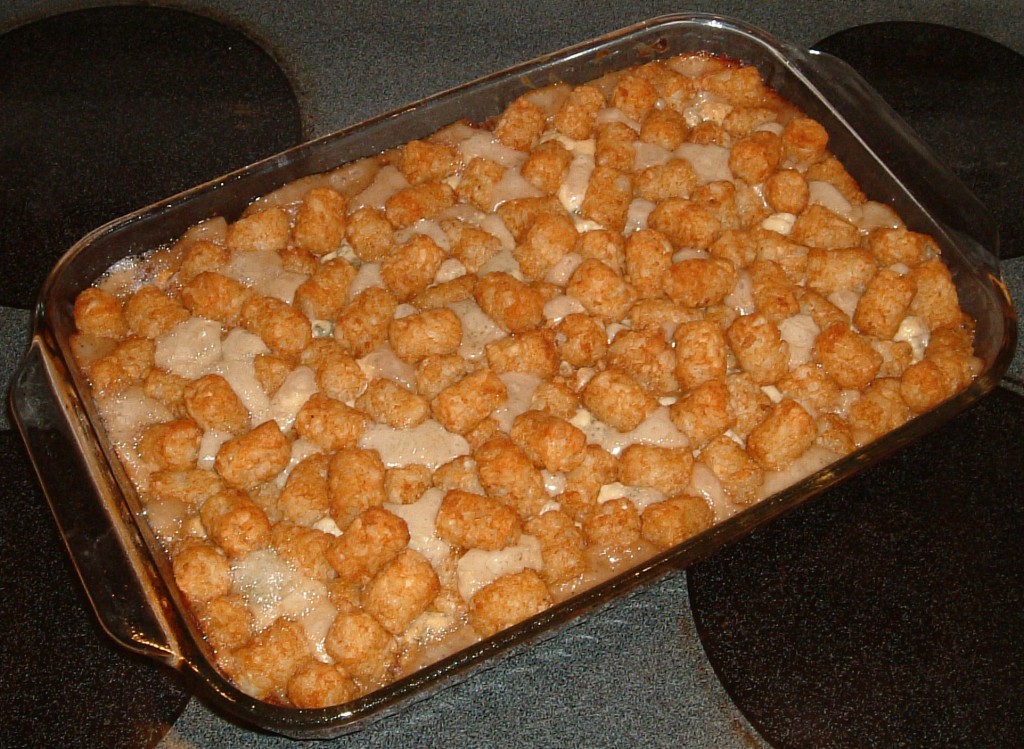
There’s never an excuse for soggy tots
(photo by Flickr user naughtomaton)
The sense of Dutch heritage I got from Pella was so strong, and my connection to my own Irish and German heritage so non-existent, that I even identified as part Dutch for a while, until a grade school teacher convinced me that heredity doesn’t work that way.
Regardless, I’d never heard of Broodje Kroket until recently. And despite all my exposure to pseudo-Dutch culture as a kid, I couldn’t even pronounce it. I asked my friend Alex, an Austrian who’s been living in the Netherlands for years, to demonstrate the pronunciation for me.
Kroket is the Dutch version of the French word croquette (also a loanword in English and many other Western languages), which means a food of some type, whether minced meat or vegetables or mashed potatoes or whatever, that’s been formed into a shape then breaded and deep fried. In the Netherlands, kroketten are cylindrical, while ball-shaped fritters are called bitterballen.
These are so popular in Dutch culture that even McDonalds has gotten into the act. I’d hoped to have a person-on-the-scene report on the McDonalds version for us but have not heard back from our correspondent in the Netherlands as yet. I will update if and when I do.
Regardless, I gotta say that this sounds like something I could get into. Not necessarily the McDonalds version (though I’d try it given the opportunity!) but in general. Breaded and deep fried beef stew on a bun with spicy brown mustard? Somebody get Wiener and Still Champion on the phone, sounds like a job for Gus Paschalis!
Anyway, per my usual MO, I looked at a few beef ragout & Dutch kroket recipes online, took the things that I liked and/or thought would work from each and synthesized my own recipe, which I will share with you here.
Fake Dutchman Beef Ragout
Prep Time: 20 minutes
Cook Time: 4 hours
Total Time: 4 hours 20 minutes
Yield: 5-6 cups of thick ragout
A thickened beef stew to be rolled into cylinders or balls, breaded and deep fried
Ingredients
- 2 lbs chuck roast
- 1.5 onions, finely diced
- 8 oz button mushrooms, fine dice
- kosher salt
- white pepper
- 1 tbsp maggi seasoning
- 4 cups water
For the bechamel:
- 4 tbsp butter
- 4 tbsp flour
- 3 cloves garlic
- 1.5 cups milk
- 1 tbsp thyme
- white pepper
- fresh grated nutmeg
Instructions
- Season roast with kosher salt & white pepper, then cut into stew cubes.
- Brown meat in dutch oven, remove with slotted spoon
- Cook onions & mushrooms in meat juices until soft, scraping the pan bottom & essentially deglazing with the moisture expressed by the vegetables
- Add meat back to onion/mushrooms. Add 4 cups water & maggi seasoning
- Simmer for several hours, until there is very little liquid remaining and the meat shreds easily.
- Shred the meat in its juices (I used a potato masher) with the onions & mushrooms. Set aside.
- In another large pan, melt butter over low heat. Add flour, garlic, thyme, white pepper, mixing well. Cook for a few minutes
- Slowly add a bit of hot milk in at a time, stirring constantly, waiting for milk to be absorbed completely before each new addition, until all milk has been added.
- Mix meat mixture into the bechamel. Stir thoroughly, ensuring even distribution.
- Grate nutmeg over mixture, stir again.
Notes
Chill the ragout for a while–once it gets down to refrigerator temperatures it will have solidified enough to be worked into bitterballen or kroketten.
To make the croquettes, I spooned a 1.5″ thick or so line of the ragout, which after chilling became semi-gelatinous, onto a long sheet of plastic wrap, then used the plastic wrap to roll it into a cylinder. I then wrapped aluminum foil around the outside, twisting the ends and using the wraps to smoosh it all together more firmly so it would hold its shape better. I put these cylinders into the freezer for a short time to firm them up even more, then cut them into 4″ lengths which I quickly breaded using flour seasoned with white pepper and garlic salt, an egg wash, and panko bread crumbs.
I fried my first pair of kroketten and tasted one. Wow. Perfection. Maybe the whole fake Dutch thing rubbed off on me more than I thought.
OK, it’s way more delicious than it looks. But I still needed to make it into a sandwich. I used a Gonnella brand French roll, which may be slightly crustier than the soft buns Broodje Kroket are normally served in but served my purposes well, especially since I’d sized the croquettes to fit them perfectly. I added some spicy brown mustard and bang.
You can’t eat a sandwich like this without fries though. Well, as long as I’ve got the deep fryer fired up…
Perfection on the first try, a rarity in my posts at the Tribunal. And somewhat disappointing, to be honest. I mean, many of the articles I’ve read have said that croquettes are a great way to use up leftovers. I was looking forward to making croquettes out of things like leftover chicken curry
or mashed potatoes
spaghetti
or even chicken soup
not to mention that my homemade boudin would make an excellent croquette
or my greatest idea yet, sure to make me an instant internet hero, the chili cheese dog croquette.
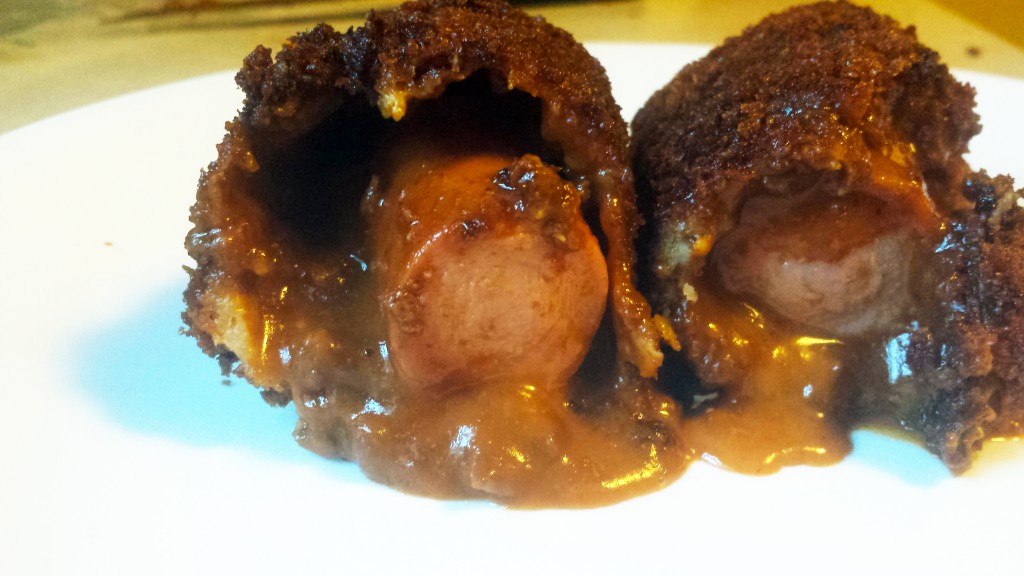
OK, I used a crappy cheap hot dog, the cheese melted, and the whole thing fell apart when I cut it open. Be honest–you’d eat it anyway.
Oh well. I guess those delicious croquettes will have to remain unfulfilled dreams for now. Damn me and my shit-hot kitchen skills! Maybe next month I’ll fuck something up bad enough to make a more interesting post.

I like sandwiches.
I like a lot of other things too but sandwiches are pretty great




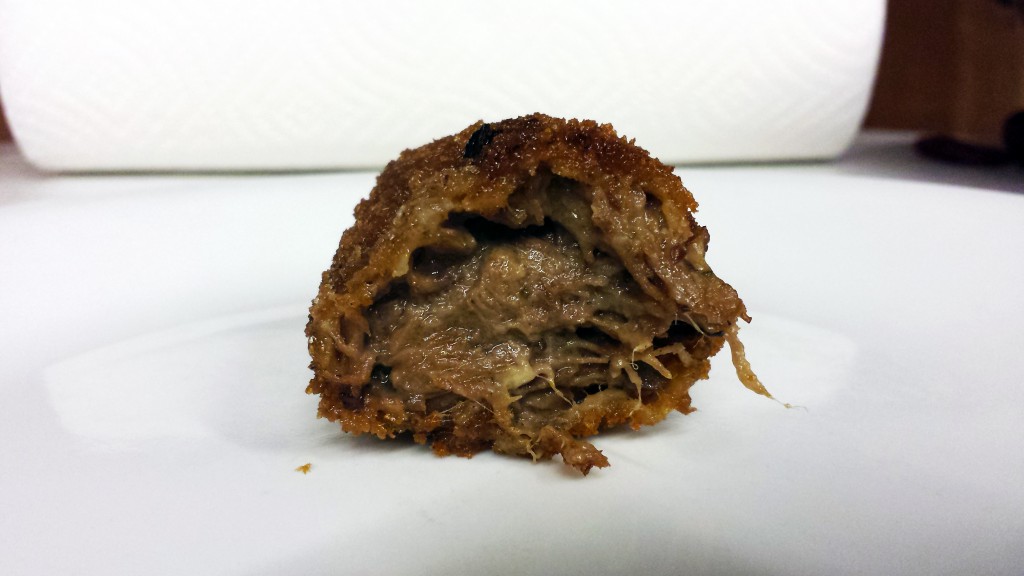
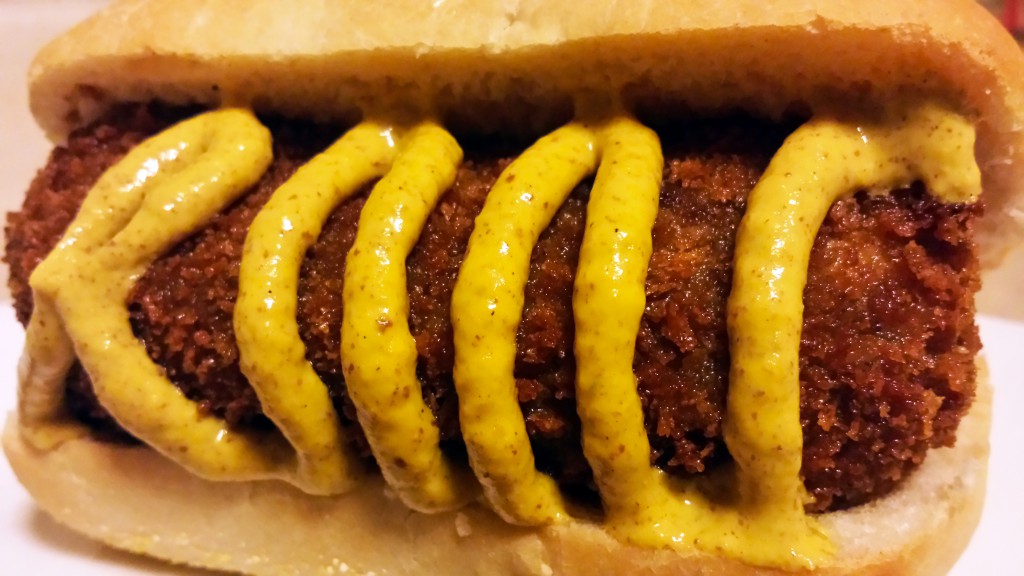
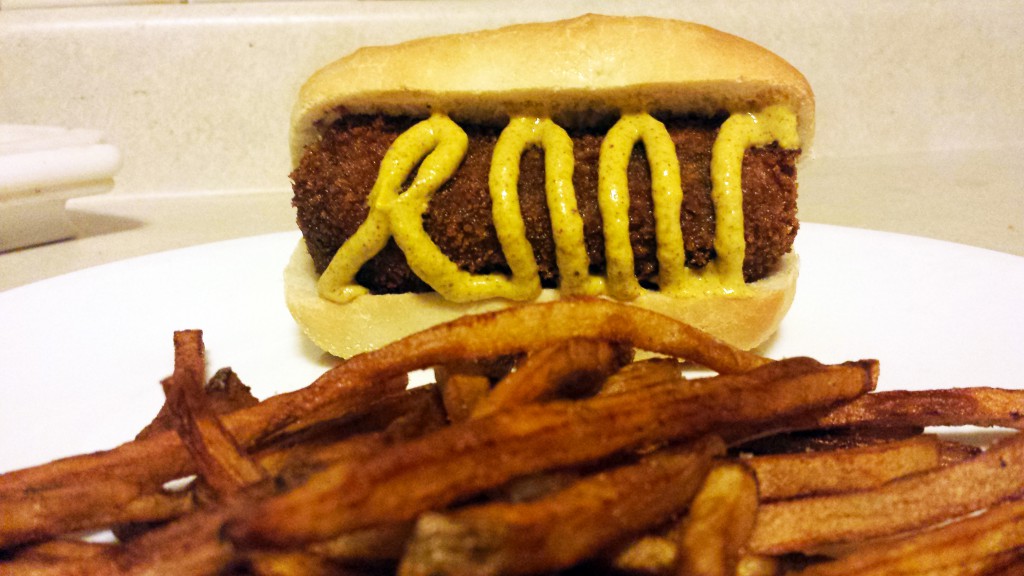
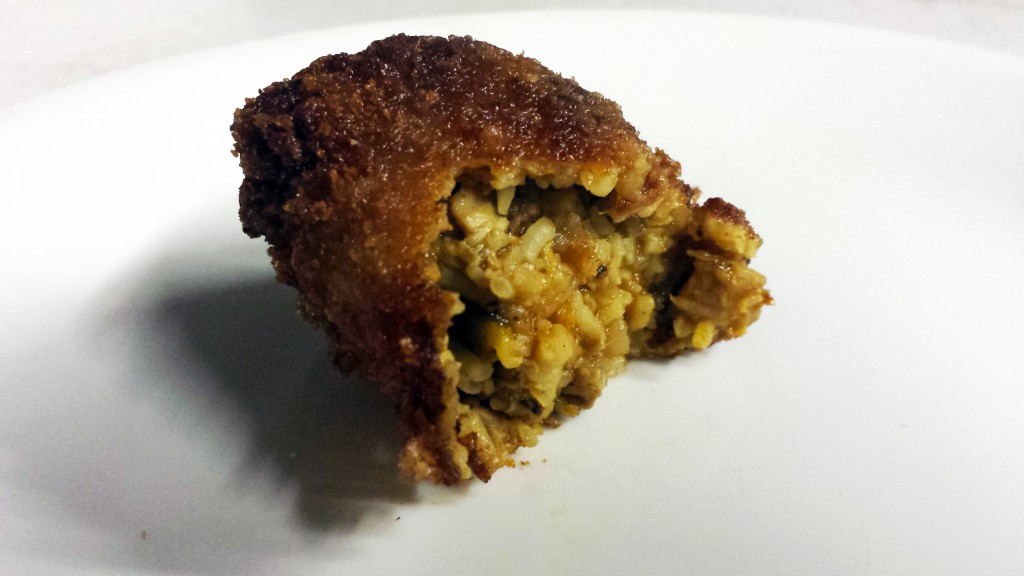
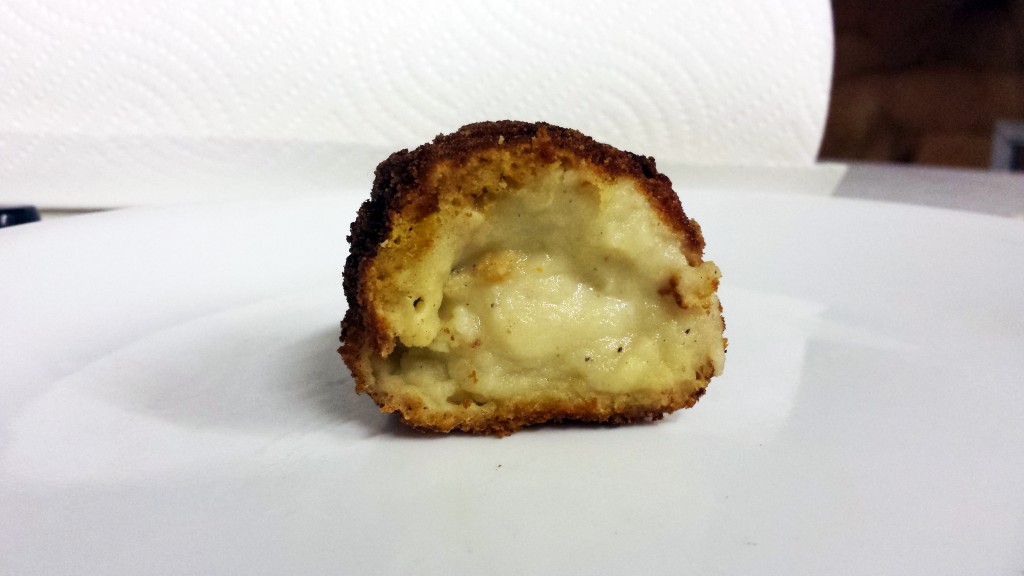
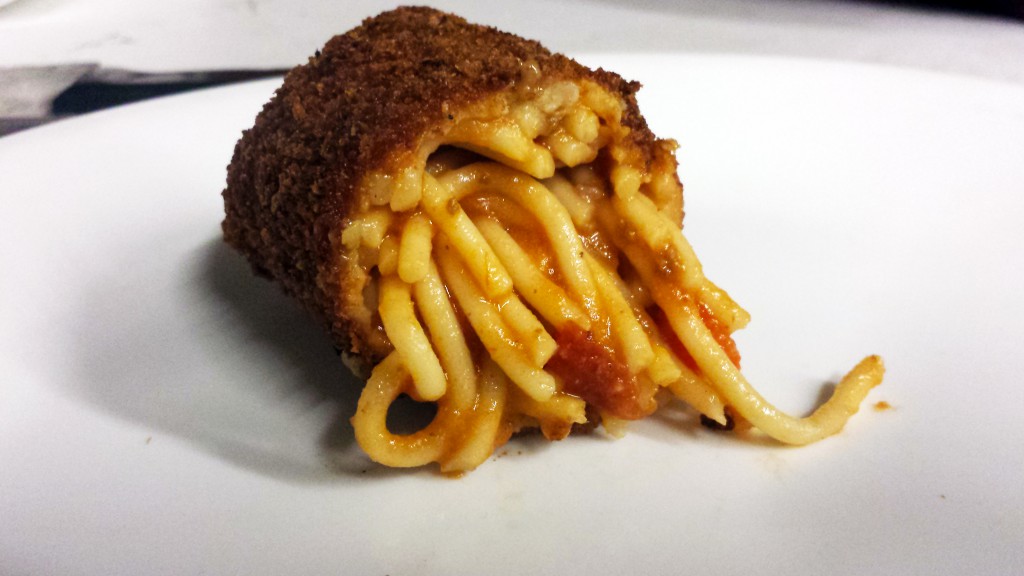
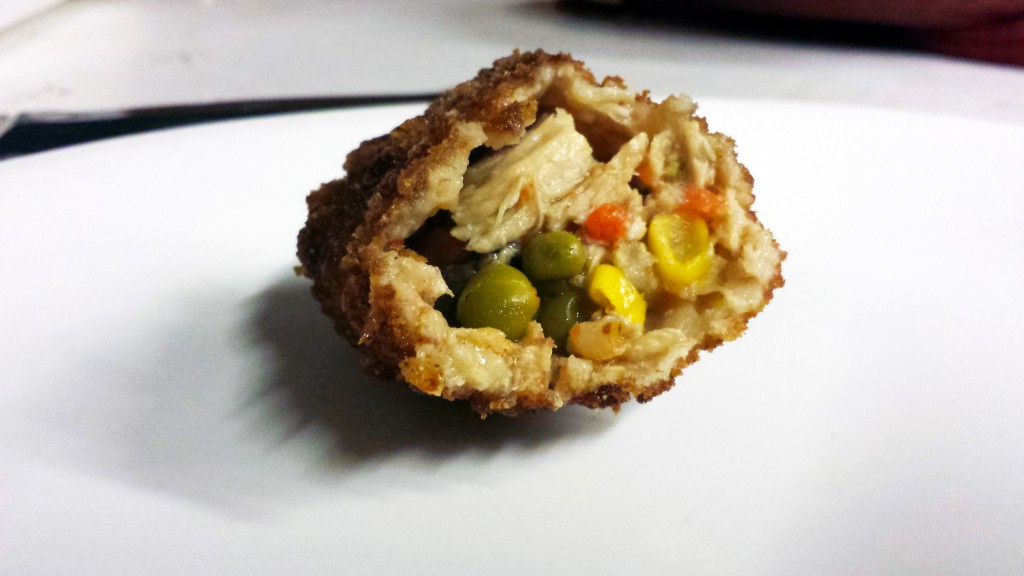
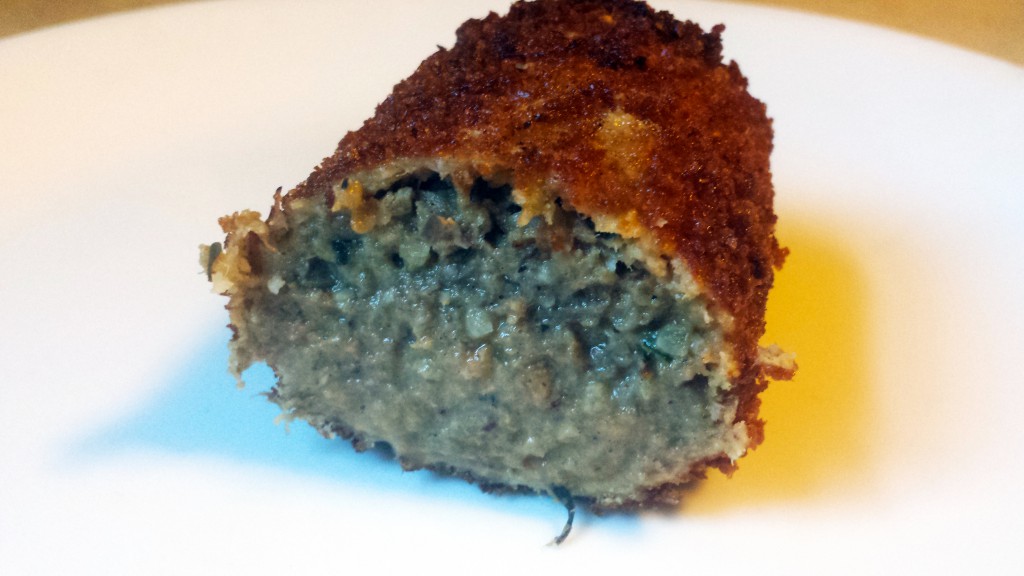
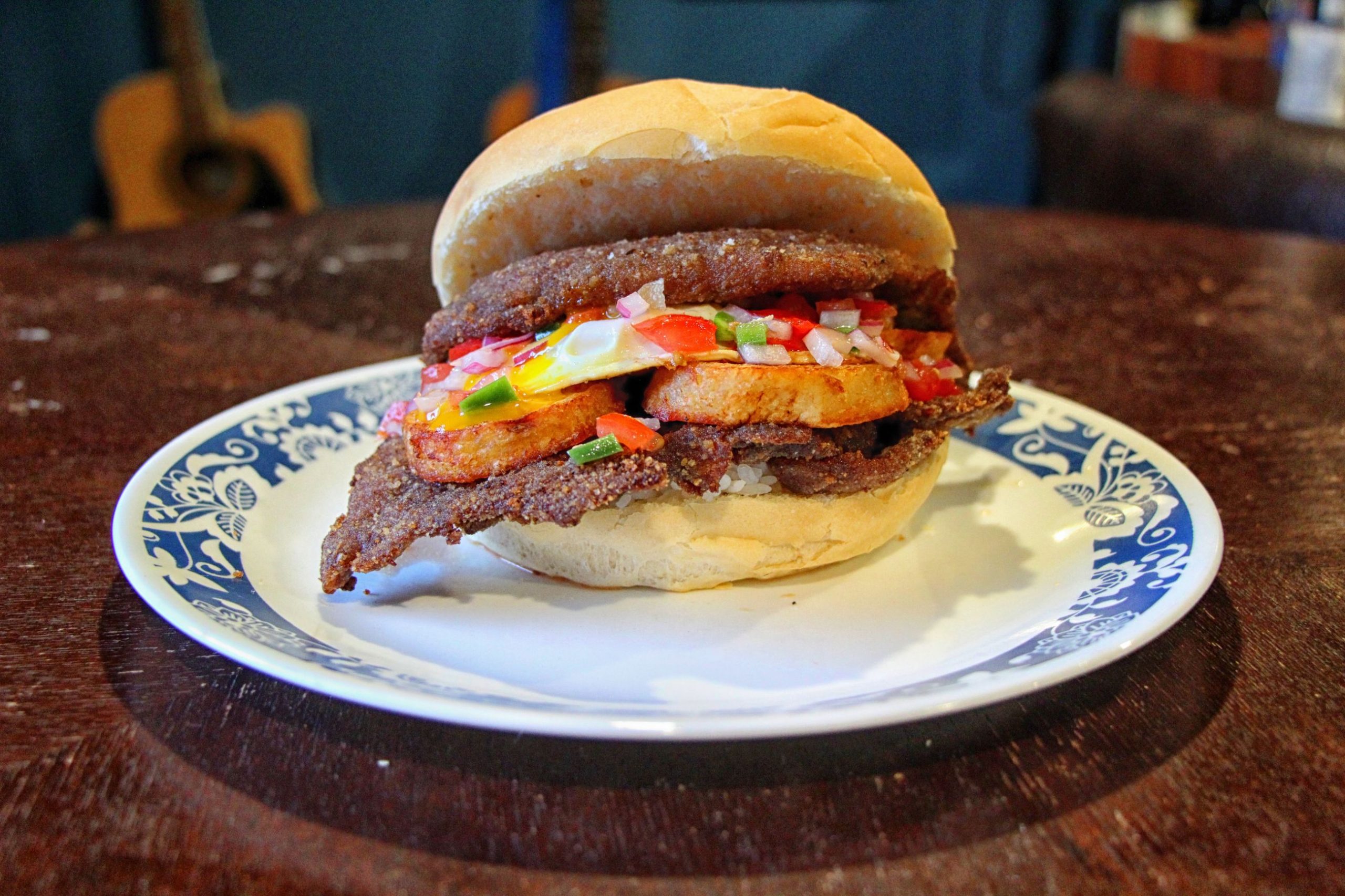








All I can say is “it’s a good thing I don’t own a deep fryer”
Oh.my.God.
Totally going to try this. May be a new MN state fair food booth in there somewheres… Brightly colored, deep fried and served on a stick!
Two tips:
1) add gelatine to the stew. Once it cools it will cause the mixture to stiffen even more and thus become far easier to handle it.
2) Find out about “garnalenkroketten”.
I used to know a woman from Pella, she went on and on about Tulip Time. But her family was not Dutch, and like most of the Catholics in that town, she was of German descent. We had a great time visiting her family and the church’s food stand. Her dad ran it through a couple of geriatric Apple IIs.